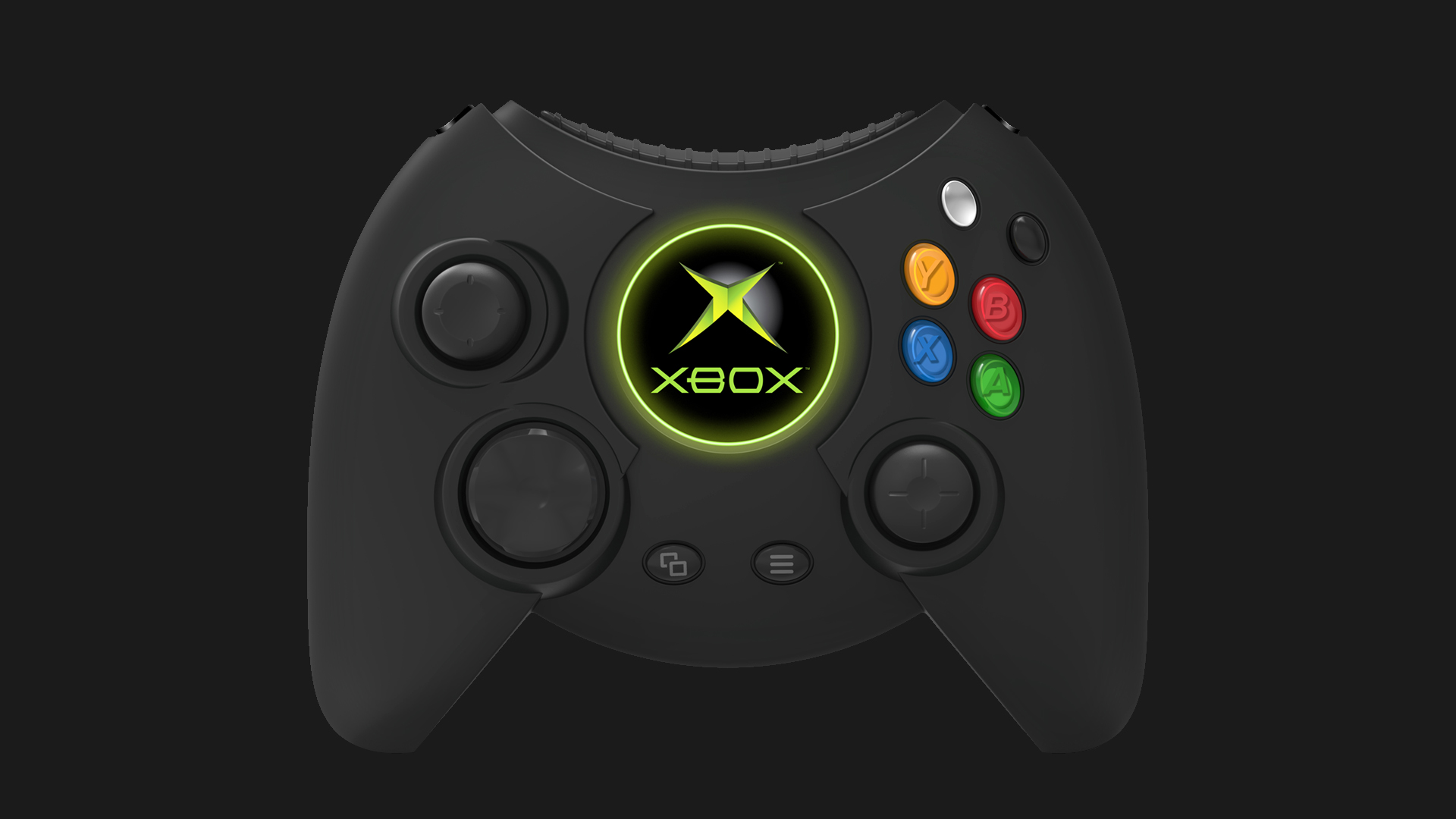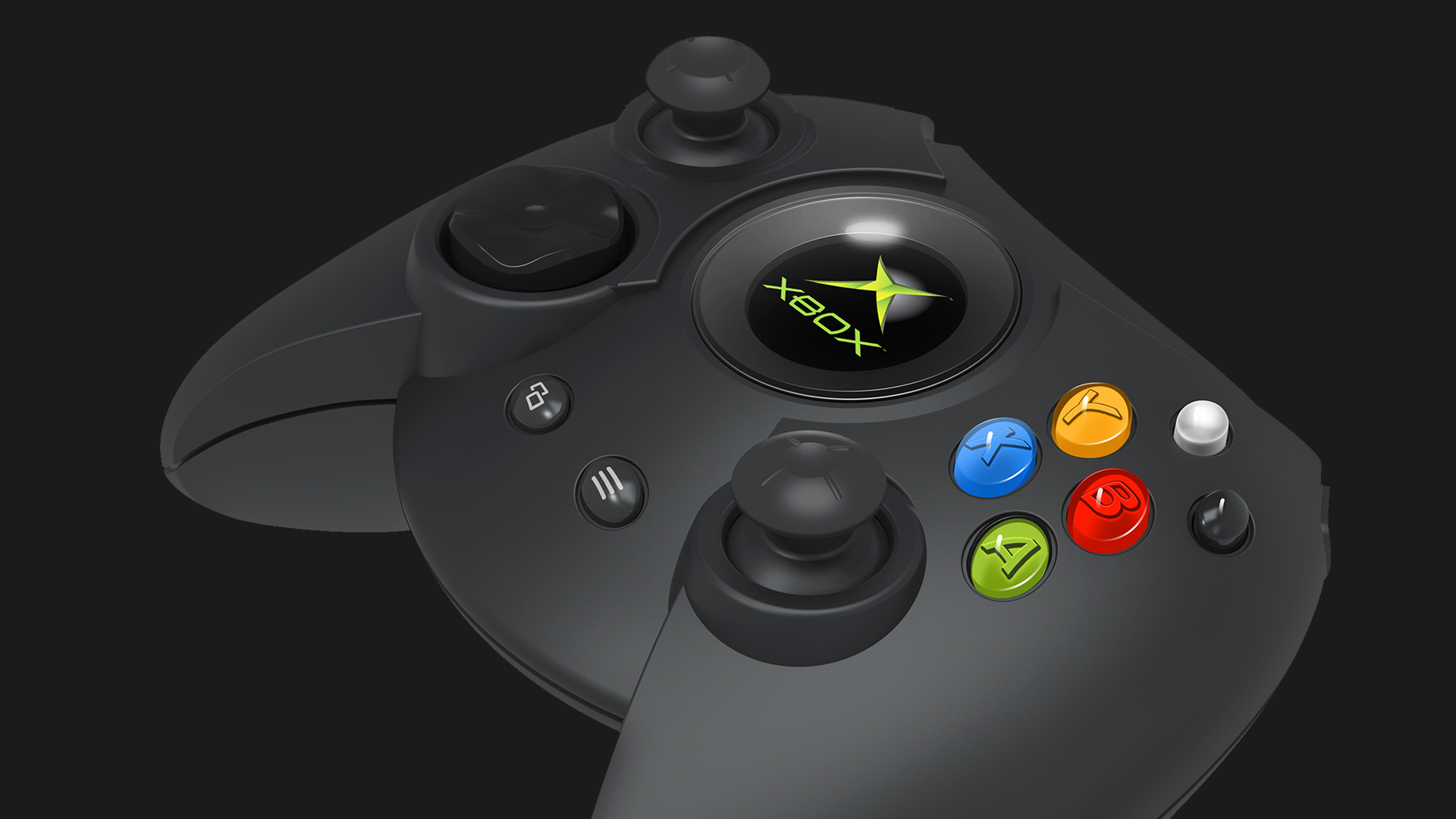What it's like playing PC games with the infamously massive ‘Duke’ Xbox controller
The controversial gamepad is back from the dead.

The Duke was the nickname of the very first Xbox controller. It was infamous for its bulk, leading to it being named ‘Blunder of the Year’ by Game Informer in 2001, the year the console was released. “I took a huge amount of crap for the size of the controller back in the day,” designer Seamus Blackley told Inside Xbox. “People really didn’t like it. I had things thrown at me on stage.”
Over the years, however, the Duke has gained something of a cult following. Some people are convinced that it was actually a misunderstood masterpiece, and that it deserved better than being replaced by the smaller Controller S. I personally have fond memories of the Duke, because there was a period when my PC was simply too shit to play modern games and I couldn’t afford to upgrade, meaning the Xbox was the next best thing. I don’t think it’s a design classic, but there was something appealing about its almighty heft.
And now, like some ungainly phoenix rising from the ashes, the Duke is back. A new version of the controller, developed in collaboration with Blackley, has been released by peripheral manufacturer Hyperkin. The Hyperkin Duke is a faithful replica of the original controller, albeit with a few changes to accomodate modern games. The addition of shoulder bumpers as alternatives to the awkwardly-placed black and white ‘gems’ is the biggest alteration, but otherwise it feels every bit as chunky as it did at the turn of the millennium.

And, importantly, it’s now PC compatible. I spent an evening with the Hyperkin Duke, playing a varied selection of games from Hollow Knight to Euro Truck Simulator 2, and I kinda like it. The size is definitely something you have to adjust to. Controllers today are so compact, requiring only very slight hand movements, but here you feel like you have to really reach for the buttons. But when I got used to that, there was something satisfying about the size of the thing and the weight of it sitting in my hands. It’s actually a touch smaller than the original Duke, but still bigger than anything else on the market.
The springy triggers feel great, as do the analogue sticks and face buttons, but the new bumpers didn’t quite work for me. They feel clumsily retro-fitted and unergonomic, and I would have liked some feedback when I pressed them, like how the bumpers on the latest range of Xbox One controllers click. But I understand that adding new buttons to the Duke while maintaining its familiar design would have been a challenge for the designers, and you can still use the black and white face buttons, which is more authentic anyway.
One of the most divisive features of the original Duke was the moulded circular D-pad, which Microsoft has since replaced with a traditional cross design. The new Duke’s D-pad is more precise and responsive than its 2001 counterpart, but it still has that unique design, and I actually love how smooth it feels. But even with the improved accuracy, if you hated the Duke’s D-pad back in the day, you probably won’t change your mind now. It remains an acquired taste.

Playing Euro Truck, there’s enough nuance in the triggers to gently accelerate and brake. In The Witness, the analogue sticks are tight and responsive, allowing for smooth first-person movement. And in Metal Gear Rising, the face buttons stand up to a decent hammering—although their ‘italicised’ layout takes some getting used to. It’s a functionally solid gamepad, but feels a little cheap and plasticky compared to the standard Xbox One controller.
Keep up to date with the most important stories and the best deals, as picked by the PC Gamer team.
One of the new Duke’s most talked about features is an LCD screen in the centre that plays the original Xbox startup animation, but this is little more than a briefly distracting gimmick. I’ve still enjoyed my time with it, though. I’d never use it as my main controller, but I find myself plugging it in occasionally to enjoy its weight and size, and to feel a flutter of nostalgia. You’ll just have to decide if that’s worth 70 quid, which is quite a lot of money for a controller.
Everything else aside, it's pretty amazing how a light-hearted proposal to bring the Duke back on Twitter resulted in it actually happening—with a little help from Xbox boss Phil Spencer, who gave Blackley the rights to remake the controller. “The opportunity to bookend such a painful thing that I saw as such a failure at the time with something as cool as the relaunch of this controller is really great," Blackley told IGN. "It means it has a happy ending."
If it’s set in space, Andy will probably write about it. He loves sci-fi, adventure games, taking screenshots, Twin Peaks, weird sims, Alien: Isolation, and anything with a good story.


